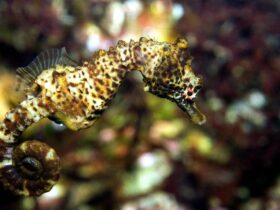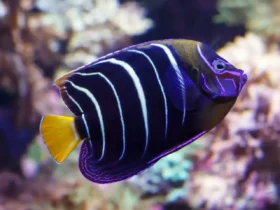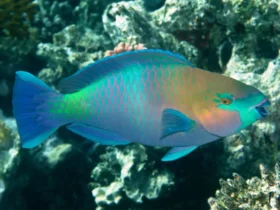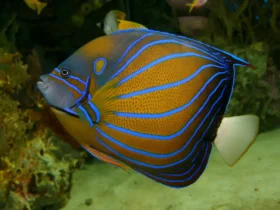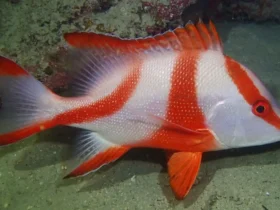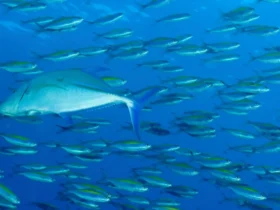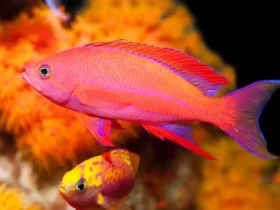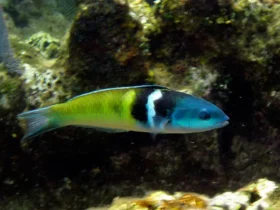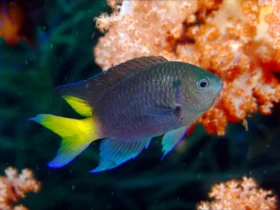Boxfish, also known as trunkfish, are a group of small to medium-sized fish belonging to the family Ostraciidae. They are known for their unique box-like shape, which is formed by a rigid, bony exoskeleton rather than the more flexible body structure seen in most other fish species. Here is some information about boxfish:
Physical Characteristics
- Boxfish have a distinctive box-shaped body with four sides, a flat top, and a bottom.
- They have a tough, hexagonal-shaped outer skeleton composed of fused bony plates, which provides protection from predators.
- Most boxfish have small, beak-like mouths and sharp teeth for feeding on small invertebrates and algae.
- Their eyes are usually positioned high on the head, allowing for good upward visibility.
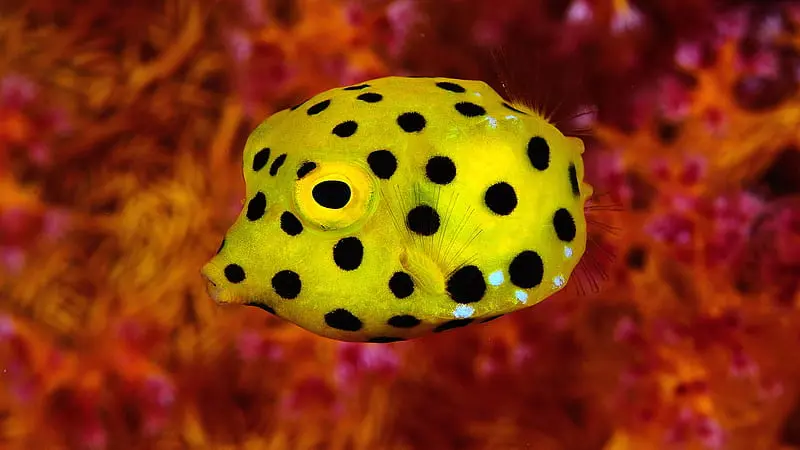
Size and Coloration
- Boxfish species vary in size, ranging from about 5 to 40 centimeters (2 to 16 inches) in length, depending on the species.
- They exhibit a wide range of color patterns, including shades of yellow, orange, brown, black, and white, often adorned with spots, stripes, or other markings.
- Some species can change their coloration to blend in with their surroundings or to indicate aggression or stress.
Habitat and Distribution
- Boxfish are predominantly found in tropical and subtropical waters of the Atlantic, Indian, and Pacific Oceans, typically inhabiting coral reefs, rocky areas, and seagrass beds.
- They are generally associated with shallow coastal areas but can also be found at greater depths, depending on the species.
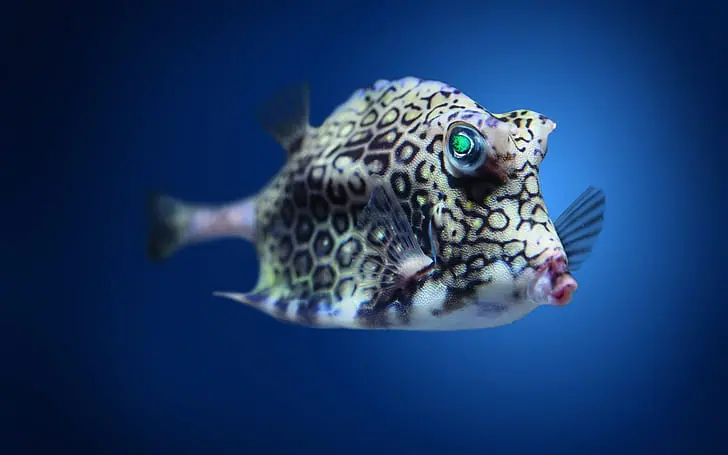
Behavior
- Boxfish are generally slow-moving and rely on their tough exoskeleton for protection rather than relying on speed or agility.
- They are primarily diurnal (active during the day) and may seek shelter among corals or rocks at night.
- Some boxfish species are known to produce toxic substances, such as pahutoxin, which can deter potential predators.
Reproduction
- Boxfish are oviparous, meaning they reproduce by laying eggs.
- They usually form monogamous pairs and engage in courtship behaviors before spawning.
- The eggs are typically laid in a protected area, such as a crevice or under a coral ledge, where the male guards and tends to them until they hatch.
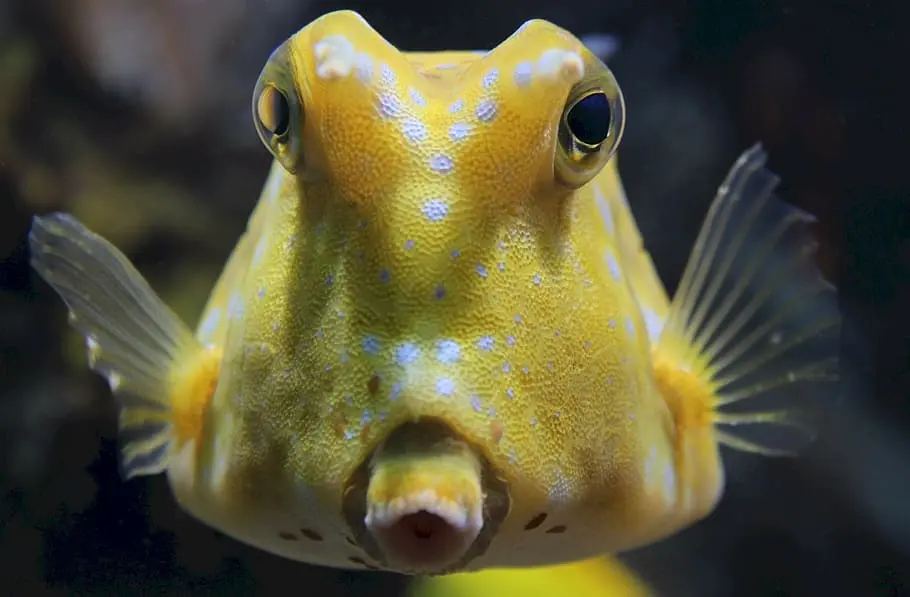
Some common species of boxfish today
While the exact number of species may vary due to ongoing scientific research and taxonomic revisions, it is generally recognized that there are around 30 to 35 known species of boxfish. These species can be found in tropical and subtropical waters around the world, inhabiting coral reefs and rocky areas.
- Yellow Boxfish (Ostracion cubicus)
- Cowfish (Lactoria cornuta)
- Black Boxfish (Ostracion meleagris)
- Spotted Boxfish (Ostracion immaculatus)
- Pineapplefish (Cleidopus gloriamaris)
- Scrawled Cowfish (Acanthostracion quadricornis)
- Starry Puffer (Arothron stellatus)
- Bluelined Leatherjacket (Meuschenia scaber)
- Bluespotted Boxfish (Ostracion meleagris)
- Broomtail Filefish (Acreichthys tomentosus)
- Longhorn Cowfish (Lactoria cornuta): The Longhorn Cowfish is known for its elongated “horns” on the front of its head. It has a boxy body shape with a yellowish-brown coloration and distinctive blue spots.
- Orange Boxfish (Ostracion cyanurus): The Orange Boxfish features a vibrant orange body color with blue stripes or spots. It has a boxy shape and a small, pointed mouth.
- Whitespotted Boxfish (Ostracion whitleyi): The Whitespotted Boxfish has a black body with white spots and small, sharp spines. It can change its coloration depending on its mood or surroundings.
- Spotted Trunkfish (Lactophrys bicaudalis): The Spotted Trunkfish has a boxy shape with a yellowish body and distinctive dark spots. It also has a prominent snout and small, sharp spines.
- Smooth Trunkfish (Lactophrys triqueter): The Smooth Trunkfish has a rounded body shape with a yellowish-brown or grayish coloration. It lacks the sharp spines seen in other boxfish species.
- Polka-dot Boxfish (Ostracion lentiginosus): The Polka-dot Boxfish has a yellowish body with small black spots scattered across its skin. It has a distinctive boxy shape and a small, rounded mouth.
- Black Boxfish (Ostracion meleagris): The Black Boxfish has a boxy body shape with a dark black coloration and small white spots. It can change its coloration to a more pale or mottled pattern when threatened.
- Saddleback Boxfish (Ostracion cyanurus): The Saddleback Boxfish has a dark brown or black body with a distinctive saddle-shaped marking on its back. It also has white spots scattered across its skin.
- Scrawled Cowfish (Acanthostracion quadricornis): The Scrawled Cowfish has a boxy body shape with a yellowish-brown coloration and a pattern of dark lines and markings. It also has two prominent “horns” on its head.
- Yellow-eyed Kole Tang (Ctenochaetus strigosus): The Yellow-eyed Kole Tang, although not a true boxfish, has a similar body shape and features. It has a bluish-gray body with distinctive yellow eyes and a yellow stripe running along its dorsal fin.
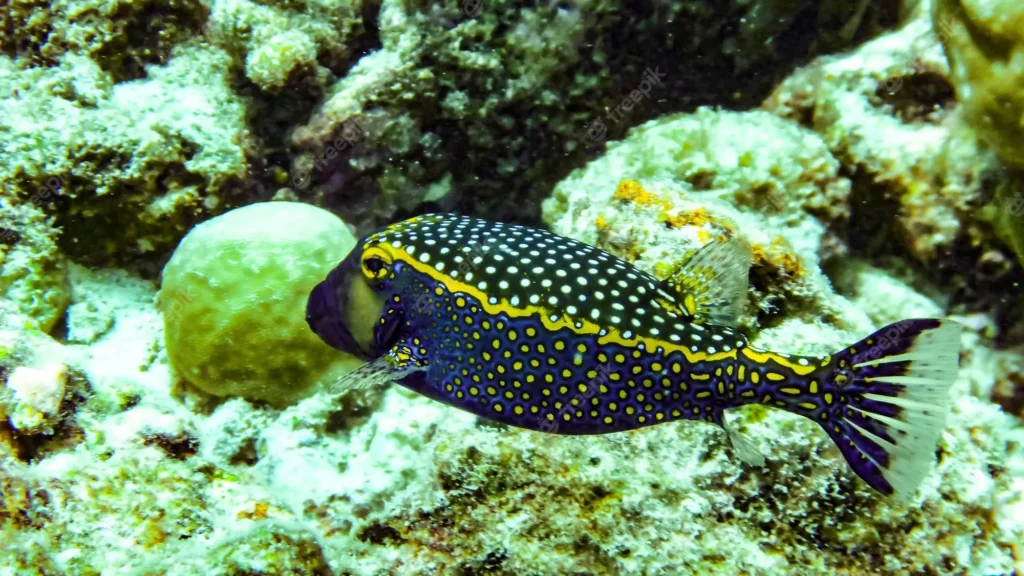
While boxfish are admired for their unique appearance and intriguing behaviors, they can be challenging to keep in captivity due to specific dietary and habitat requirements. It’s important to research and understand the specific needs of each species before considering them for an aquarium. Additionally, some species may have specialized care requirements or be more suitable for experienced aquarists.
